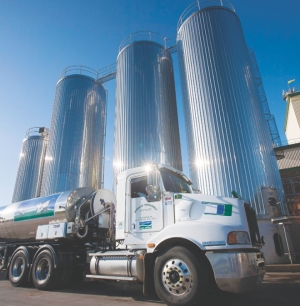Lower total production cut milk supplies to manufacturers, but with healthy – albeit relatively low – growth in dairy production and consumption outstripping domestic requirements, the industry still relies on export growth to drive farmgate returns. We collate our figures on the prior season, as the data comes available, including estimates of how milk was utilised.
A first glance at the export figures might suggest no truly significant year-on-year shift. This is not unexpected, given generally stable, established product mixes and relationships in export markets. So, the 2012-13 figures reveal export volumes were up, about 5% to 800,000 tonnes and export value was marginally down (0.1%) to A$2.756 billion. Higher cheese volumes and the higher Australian dollar were primary drivers of these data.
Overall the pattern depicting the value of Australian exports by destination region in 2012-13 confirms that the industry’s returns are linked to Asia. Close to 75% of the total value has gone to Asia over the last three years, up from 65% in the early 2000s. Exports to Europe and the Americas has declined over the same period.
The share of total value going to South East Asia and Japan has remained stable dor ten years at about 30% and 20% respectively.
A more recent trend is the growth in the share going to ‘Other Asia’ (including 10 Asian countries outside SE Asia and Japan): this was 15-18% for much of the 2000s, but has been 25-27% over the last three years.
The 2012-13 figures provide evidence of a notable year-on-year shift: in 2012-13, though Japan remained the top export destination by value, Greater China (China, Hong Kong and Macau) became the top export destination by volume. This was due largely to the year-on-year growth specifically in China-bound exports of fluid milk and whole milk powder (WMP).
OECD-FAO forecasts are for Chinese consumption to grow 38% by 2022, plus China is facing serious challenges in growing dairy supply domestically. Its domestic production for the first half of 2013 reflects this—reportedly already 5-10% down.
China-based researchers BSNABC estimate UHT milk accounts for 60% of the Chinese liquid milk market and consumption is growing at about 10% per year.
• Glen Fisher is industry analyst with Dairy Australia.
















